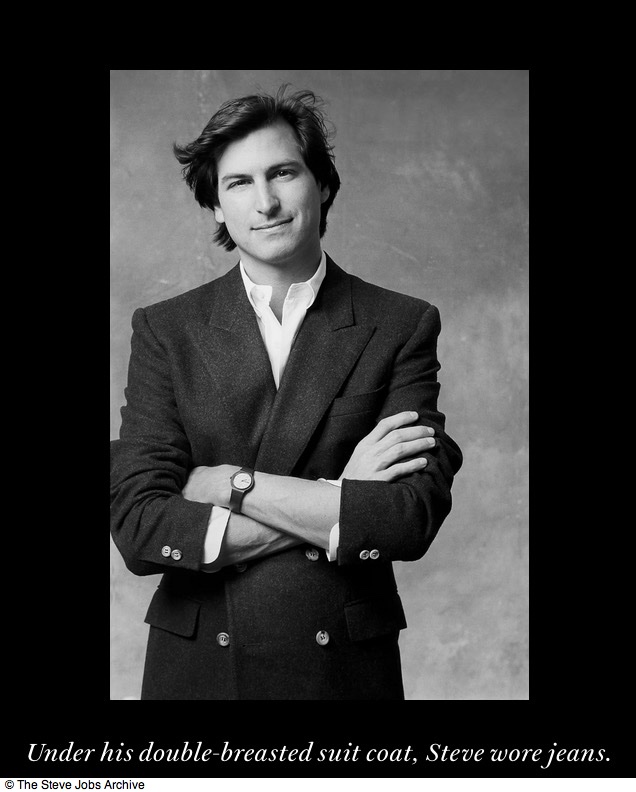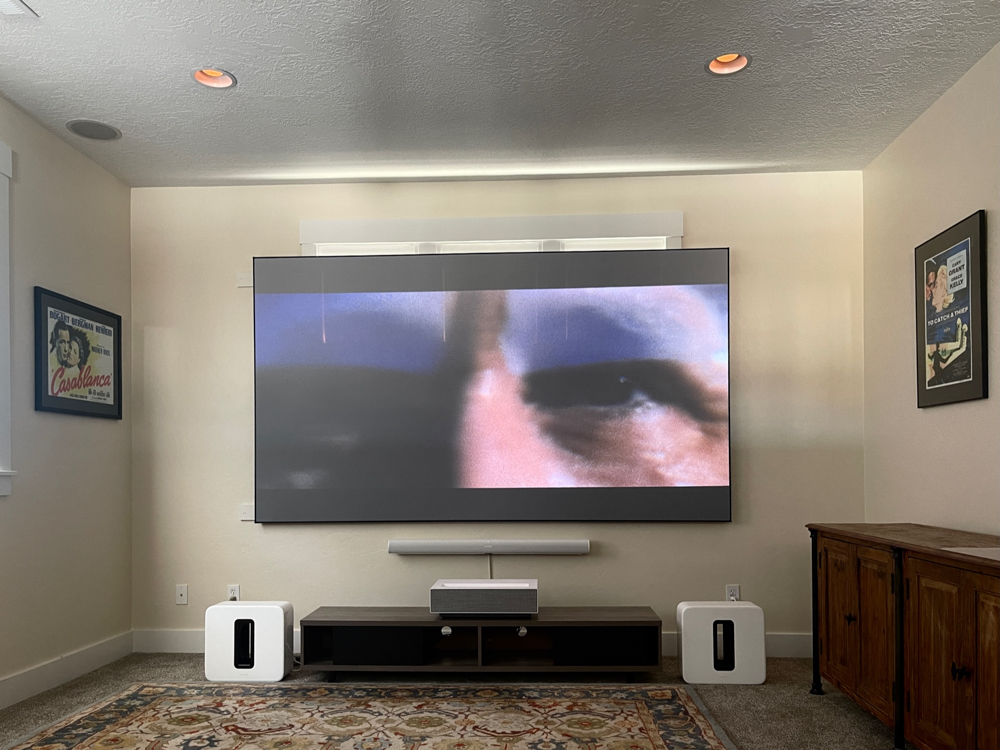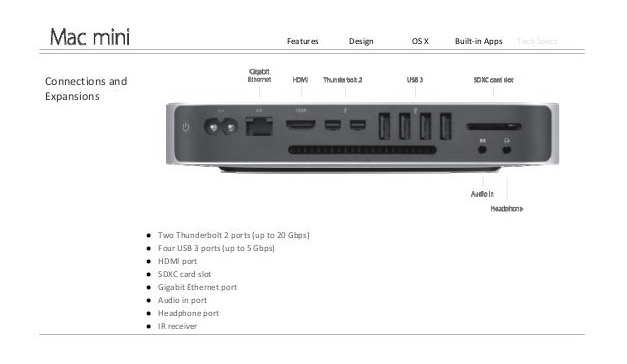Some kaizen called for.
Like Toyota I am a huge believer in kaizen:

Kaizen, though I am both ‘top management’ and ‘rank and file’.
Whether with the opposite sex (costly) or with machines (less so) there are few things in life which cannot be improved upon. With my Home Theater, which runs a movie every evening, the focus of kaizen has been on less obvious areas.
You can read about the construction process as follows:
Hardware has been the least of the issues. The LG CineBeam HU715QW has been a winner. While the extremely acute angle at which it projects the image means that alignment of projector and screen is ultra critical, once done with the help of the software tools in the projector, some garage language and an invocation of grievous bodily harm to anyone moving the assembly thereafter, it has been perfection. We are talking Lexus LS400 quality here (the vehicle which defines kaizen) and with a projector-to-seat distance of some 12 feet, the bulb fan is inaudible.
One of the less remarked aspects of this exceptional piece of hardware has been its seamless and unobtrusive upsampling of regular definition content on DVD so that the quality is very close to that of a BluRay disk with its eight times larger file size – 32gB against 4gB. All those old pre-BluRay DVDs on the file server now look better than ever.
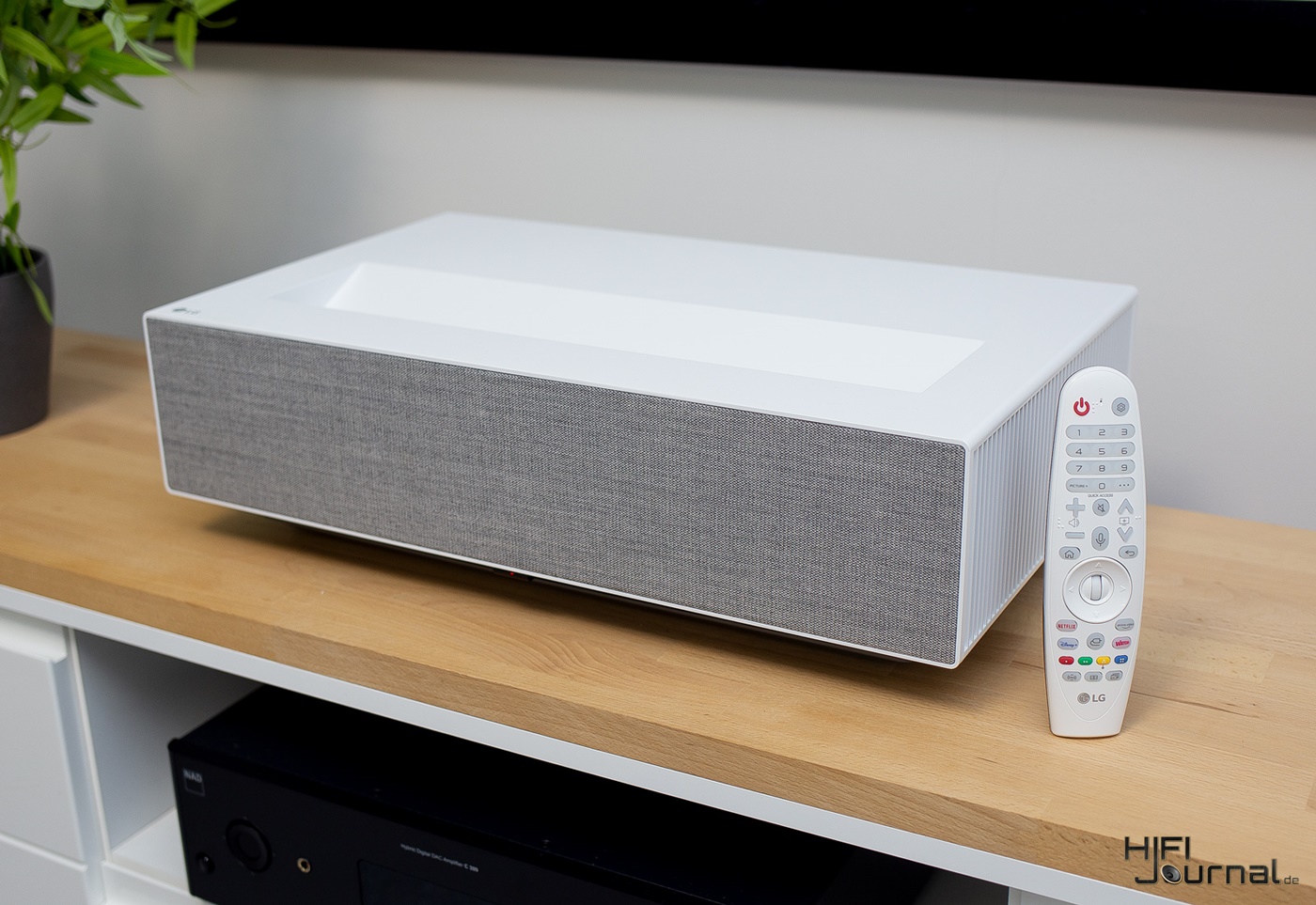
The LG HU715QW UST projector.
Equally, the Sonos sound system has been trouble free and if the maker is applying over-the-air updates while I am in the land of nod, I have not noticed and it continues to work seamlessly. I mention this as these updates has been have been the cause of some controversy, but I remain a happy camper.
And as regards data sources, the old Mac Mini with attached HDD boxes works well using a Bluetooth mouse and the Apple TV 4K puck for streamed content is an absolute knockout with its much improved controller. It also uses Bluetooth, meaning no line-of-sight nonsense with remote controls, with all hardware hidden away in the credenza on which the projector sits.
So the hardware side is robust, high quality and troublefree.
But the same cannot be said for the room. While the size is perfect at 20’9″ long, 13’11” wide and 9’2″ high and the reclining seating is a delight for the bottom and back if not for the pocketbook, getting rid of light leaks has been a truly kaizen project. With the theater first installed in the depth of winter, outside light was not an issue. It was pitch dark by the movie hour. But as Daylight Savings Time kicked in (what jerk thought of that concept?) light leaks became abundant. So first it was drapes for the rear facing triple windows:
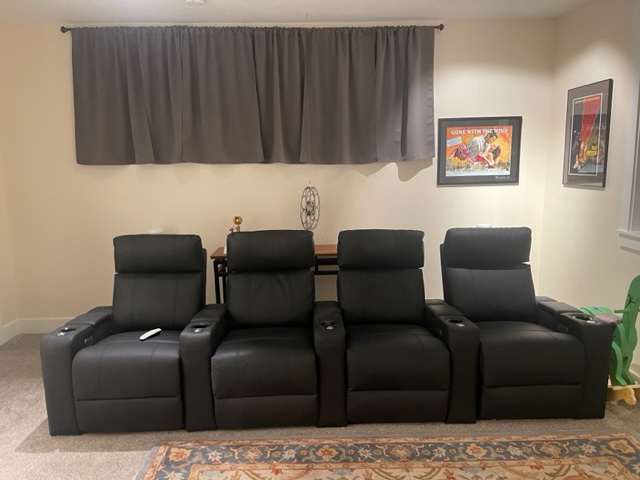
Drapes installed. A gorgeous Goldberg 1930s era 35mm film reel hangs from
the ceiling next to an antique English GE ‘candlestick’ telephone.
The rear surround sound Sonos speakers are just visible.
Next, the slatted blinds for the west facing side windows proved totally inadequate. I replaced them with silvered/black blackout blinds which proceeded to leak light at the edges, so L-shaped plastic channels were fitted:
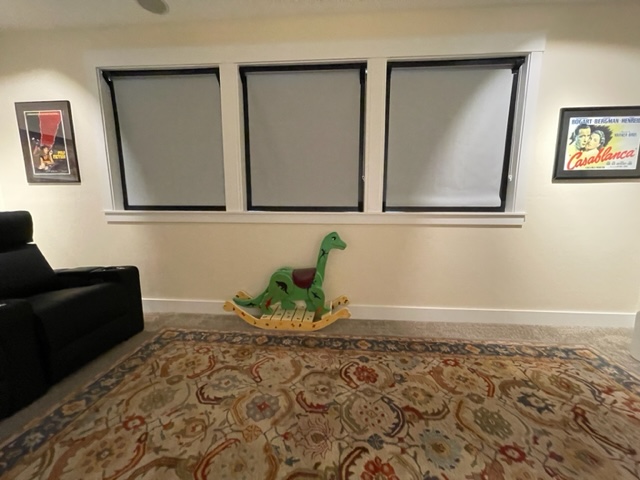
Lots of careful work saw to it that the blinds remain fully functional.
I made the rocking dinosaur for my boy when he was in his first
years and it makes for a lovely display piece.
Then, as the sun got brighter and shone more on the north-east side behind the screen, light shafts proceeded to show through the screen. Nowhere did the Elite Screens specs mention that their screens are partially translucent so the monster 123″ display had to come off the wall, with much help from my son, and black-out material was fitted over those three windows to seal them off for once and for all. A high risk project:
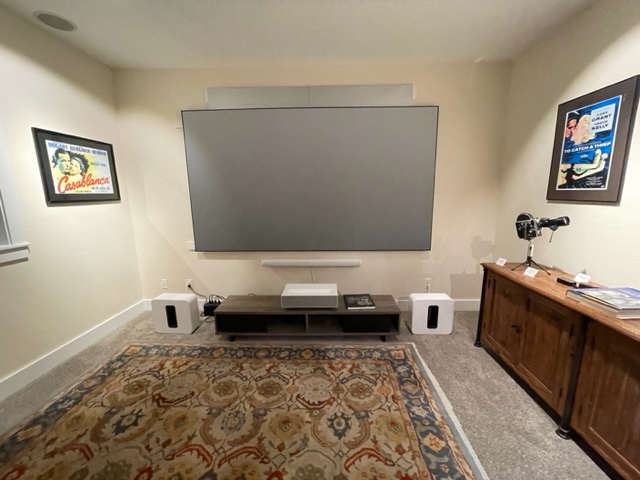
Windows behind the screen blacked out with hardboard panels and blackout
material. A small uninterruptible power supply is behind the left Sonos
sub-woofer.
Now things were getting properly dark, a hand extended no longer visible with the lights out. And speaking of lights, all the bland ceiling floods were replaced with spotlights to add drama to the illumination of the old movie posters:
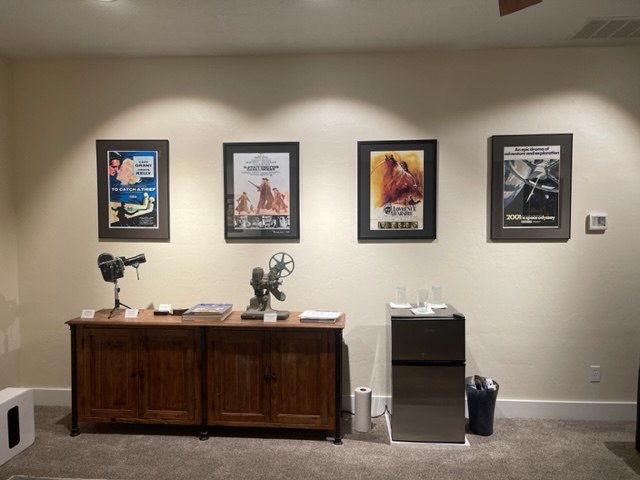
A magnificent Bolex H-16 16mm movie camera at left, a Cecil B. DeMille-era
Weston Master selenium cell exposure meter and an old Bell & Howell
16mm movie projector add a period touch.The silent refrigerator
at right stores the essentials – ice cream and soda!
So yes, kaizen absolutely works, but don’t let anyone tell you it’s easy. It’s the same reason that Toyota makes the best cars in the world.
